February itinerary in Japan Day 4 (Tottori Meal edition)
(Saturday, February 26)
Table of contents
1. Kitaro beer and 20th century pear chu-hi at Tottori Sand Dunes
1. Kitaro beer and 20th century pear chu-hi at Tottori Sand Dunes
I drank a pale ale of “Kitaro Beer” at “Sakyu Center View Hill” while looking at Tottori Sand Dunes. “Kitaro Beer” is a Kitaro label version of the popular craft beer “Daisen G Beer“. “Daisen G Beer” is a beer manufactured by Daisen Brewery. At the foot of Daisen National Park (elevation 300m), beer is produced using underground water from Daisen and barley and hops from Daisen. The Kitaro label is affixed, but the contents are “Daisen G Beer”, so it was a very delicious beer.
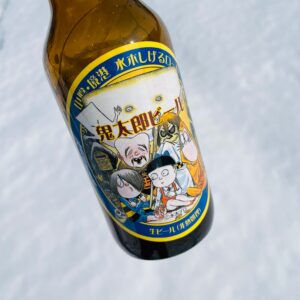
After drinking “Kitaro Beer”, I drank “20th century pear (Asian pear) Chu-hai”. “20th century pear Chuhai” is a pear chu-hai that uses 11% of Tottori’s 20th century pear juice. It is produced by Hayashi Kentaro Shoten in Tottori City.
When I tried “20th century pear Chu-hai”, it tastes like 20th century pear. The harvest time for 20th century pear is from August to October, so I was happy to be able to taste the taste of 20th century pear in February.
In the 20th century pear production ranking, Tottori prefecture is overwhelmingly No. 1 and Nagano prefecture is No. 2. In terms of pears, Chiba prefecture is first, Nagano prefecture is second, and Ibaraki prefecture is third (2020). It can be seen that the production of pears in Tottori Prefecture is quite specialized in the 20th century pear.
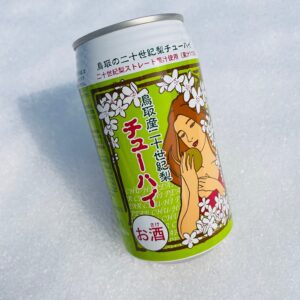
2. Ekiben / Kani (crab) sushi
After finishing the sightseeing in Tottori Sand Dunes, I had the famous ekiben “Kani (crab) Sushi” of Tottori Station and the local sake “Tabi (Travel) Sake No. 39 Tottori Sand Dunes” on the train from Tottori Station to Kurayoshi Station.
Abe Tottori-do’s ekiben “Kani Sushi” is a long-selling ekiben that started selling 70 years ago in 1952. It is also the first “Kani Sushi” sold in Japan. They use only fresh crabs landed at a local fishing port in Tottori prefecture. Rice is also produced in Tottori prefecture, so it is “Kani Sushi” made only with local ingredients. It was so delicious that I couldn’t believe it had the same taste since 70 years ago.
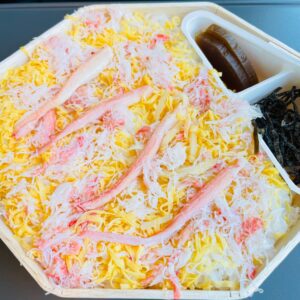
“Tabi Sake No.39 Tottori Sand Dunes” is a sake produced by “Nakagawa Sake Brewery”, which makes Tottori’s local sake “Goriki”. “Tabi Sake” is a series of sake made under the concept that “there is sake that you can’t drink without traveling” and you can only buy it locally. “Tabi Sake No.39 Tottori Sand Dunes” is a Junmai Daiginjo, but it is not sweet at all and is a sake that goes well with “Kani sushi”.
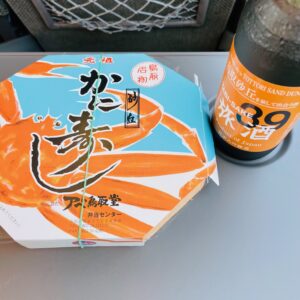
It was only a 28-minute trip from Tottori Station to Kurayoshi Station, but thanks to the famous ekiben “Kani Sushi” and “Tabi Sake No. 39 Tottori Sand Dunes”, it was a very satisfying lunch.
3. Kurayoshi craft beer
Arriving at Kurayoshi Station, I drank the IPA of the craft beer “BREW LAB KURAYOSHI” produced in Kurayoshi City. The label was cool and the beer tasted good.
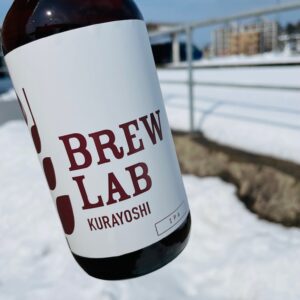
While walking around Kurayoshi city, I found a store of “BREW LAB KURAYOSHI” and drank pale ale. When I asked the store, “BREW LAB KURAYOSHI” was a company that was just established in May 2019, and the brewery was opened in August 2020. The brewery was a former clinic. The atmosphere inside the store was good, and the pale ale was a very delicious beer.

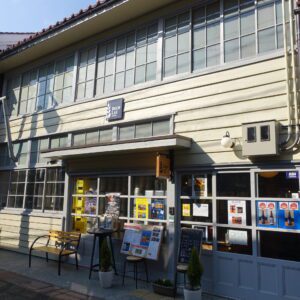
After drinking a delicious beer at “BREW LAB KURAYOSHI”, I stopped by the sake brewery “Gensui Shuzo” in Kurayoshi City. “Gensui Shuzo” is named after Heihachiro Togo who stopped by Kurayoshi. At “Gensui Shuzo”, “BREW LAB KURAYOSHI” sold “Sake kasu (sake lees) brew” made from “Gensui Shuzo” sake lees, so I bought it and drank it. For sake, I bought “Daiginjo Sei Dry” and drank it at a hotel in Yonago. It was a very delicious sake. It’s good that local companies collaborate to create a single product.
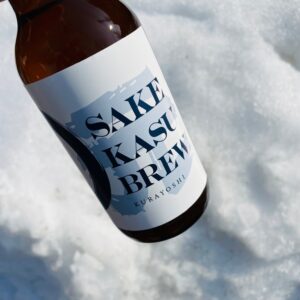
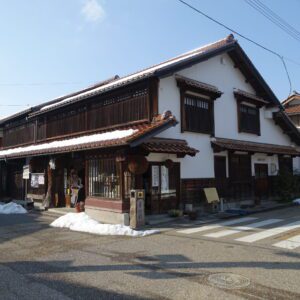
On the train from Kurayoshi Station to Yonago Station, I drank the pure malt whiskey “Kurayoshi” produced in Kurayoshi City with “Gegege’s Medama Oyaji Water”. In addition to the beer, sake, and whiskey I drank, there is even a “Kurayoshi Winery” in Kurayoshi City. It is an irresistible city for sake lovers. I couldn’t drink wine this time, but I would like to try wine next time I go to Kurayoshi.
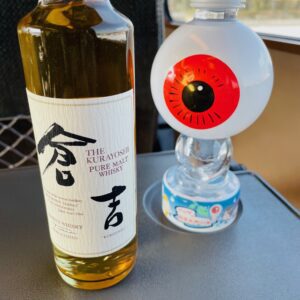
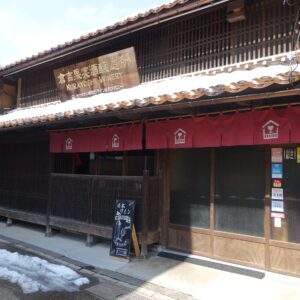
4. Washoku Izakaya Shunmon
After arriving at Yonago Station, I had dinner at “Washoku Izakaya Shunmon”, which was near the hotel. I ordered the famous sashimi platter (shiro-ika, sagoshi, yellowtail), pickled scallion, lever “Shigureni” of John Dory, seasonal fish “Namero”, grilled white onion, crab miso, and “Hamada no Akaten”.
All the meals I ordered were delicious and satisfying. However, to prevent infection with the new coronavirus, it was a pity that I couldn’t talk to the cook at all because there was a thick transparent sheet in the counter seat and the kitchen where I sat.
The shiro-ika that was in the famous sashimi platter is swordtip squid. The fishing season is from June to November, which is the representative summer taste of Tottori prefecture, but the shiro-ika I ate in February was also sweet and delicious enough. Sagoshi is a young Spanish mackerel. As I wrote in the post on March 21, the Spanish mackerel is the autumn PRIDE FISH in Tottori prefecture selected by Japan Fisheries Co-operative. The season is from October to March, so even February is in the middle of the season. It was delicious.
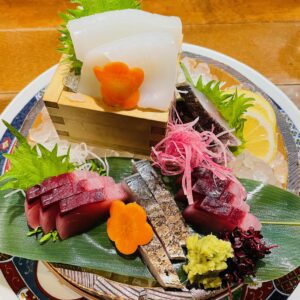
As posted on March 21, Tottori Prefecture has the highest production of scallions in Japan (2019). The second place is Kagoshima prefecture, and the third place is Miyazaki prefecture. After all, I thought that I had to order scallions in Tottori prefecture, which is the largest production area, and I was surprised that the amount of scallions was large. It was very delicious.
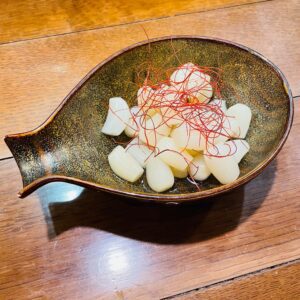 I ate the lever Shigureni of John Dory for the first time. Shigureni is seafood that has been cooked in soy sauce and mirin. It was a very delicious liver Shigureni. The “Namero” of seasonal fish was also delicious. “Namero” is made by finely tapping seasonal fish such as horse mackerel, sardines, saury, and flying fish with miso. I have been a big fan of “Namero” since I ate “Namero” for the first time in Chiba prefecture.
I ate the lever Shigureni of John Dory for the first time. Shigureni is seafood that has been cooked in soy sauce and mirin. It was a very delicious liver Shigureni. The “Namero” of seasonal fish was also delicious. “Namero” is made by finely tapping seasonal fish such as horse mackerel, sardines, saury, and flying fish with miso. I have been a big fan of “Namero” since I ate “Namero” for the first time in Chiba prefecture.
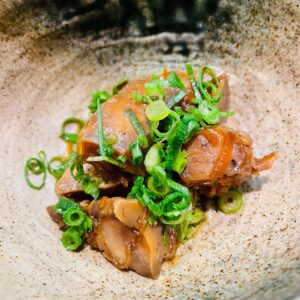
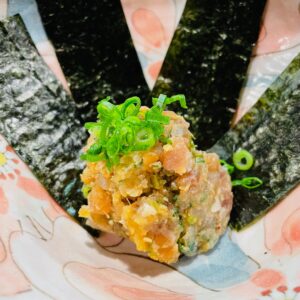
I had the grilled white onion by cutting it with scissors and dipping it in grilled miso. White onions are cultivated mainly in the sandy fields of the Yumigahama Peninsula between Yonago and Sakaiminato. There is also a branded white onion called “Hakushu Bijin” (shipping time: December-February). The name of white onion was not mentioned in “Washoku Izakaya Shunmon”, but considering the shipping time, it may have been “Hakushu Bijin”. It was very sweet and delicious.
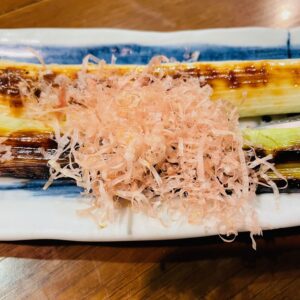
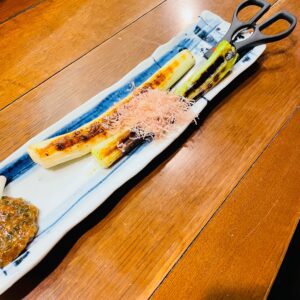
I have loved crab miso since I was a kid. The amount of crab miso at “Washoku Izakaya Shunmon” was very large and I was very satisfied. I think it was about three times as much as the amount of crab miso I ordered at an izakaya in Tokyo. It was a delicious crab miso that goes well with local sake. Since the amount was large, I ordered white rice and ate it as a crab miso bowl. It was delicious to feel happy.
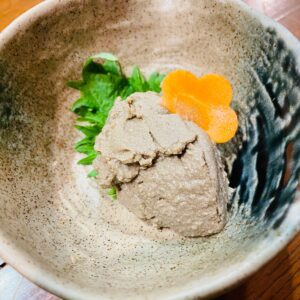
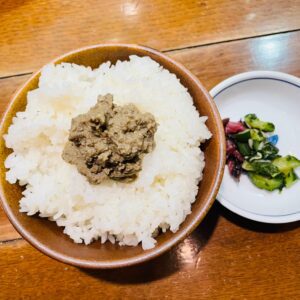
“Hamada no Akaten” is a local food in Hamada City, Shimane Prefecture. It’s not Yonago’s food, but I ordered it because Yonago is adjacent to Shimane prefecture. Previously, I ordered “Hamada no Akaten” at an izakaya in Izumo City, Shimane Prefecture, and I was impressed by its deliciousness, so I tried it again this time because of my nostalgia. “Hamada no Akaten” was very satisfying because it was as delicious as the one I ate in Izumo City. Akaten is a kamaboko made by adding a red color to the paste to make it spicy. You can enjoy the crispy texture as it is fried with bread crumbs.
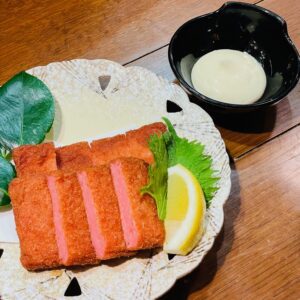
5. Ramen Yamato
I was quite full, but I ate beef bone ramen, which is a local gourmet in Tottori prefecture. Beef bone ramen is a ramen that takes soup based on beef bones. Tottori Prefecture is a region where livestock farming in Daisen, especially cattle production, is high. The beginning of beef bone ramen is to make ramen by using the surplus beef bones as soup. The origin of beef bone ramen is Masumi in Yonago City. It was far from the hotel where I was staying, so I went to “Ramen Yamato” near Yonago Station.

“Ramen Yamato” beef bone ramen (beef bone soup is commonplace, so it is written as ramen on the menu) is as cheap as Yen 450. Ramen that costs less than Yen 500 is rare these days, and I’m happy. It looks greasy, but it was surprisingly light and delicious.
Note: The departure / arrival times, fares of transportation, admission fees, meal fees, etc. listed in the text are as of the time of writing the BLOG. Please check for yourself when you go on a trip as it may change in the future.